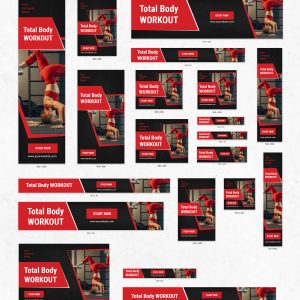Calf muscles are notoriously challenging to develop, leading some to undergo calf augmentation surgeries. However, if you prefer to enhance your calves naturally, calf raises are likely part of your routine.
If you find yourself frustrated with the lack of progress, you might be making one or more of these five common mistakes. Address these issues to build stronger, more defined calf muscles.
1. Sticking to a Single Variation
The calf muscle group consists of several muscles, primarily the gastrocnemius and soleus. Performing only one type of calf raise limits the engagement of these muscles. Straight-leg calf raises predominantly target the gastrocnemius, while bent-leg (seated) calf raises engage the soleus muscle more effectively.
Solution: Incorporate a variety of calf raise exercises, including both bent-knee and straight-leg variations. Additionally, modify your foot positions to target different parts of the gastrocnemius. Pointing your toes slightly inward can enhance the growth of the lateral head while pointing them outward targets the medial head. Using a combination of these foot positions ensures comprehensive development of the gastrocnemius muscle.
2. Skipping the Squeeze
Achieving muscle growth requires focusing on muscle contraction. Ensuring a good squeeze at the top of each calf raise can significantly enhance muscle engagement and development.
Solution: Incorporate a brief pause at the peak of each rep, contracting your calf muscles for 1 to 2 seconds. This practice maximizes muscle fiber recruitment and encourages growth.
3. Bad Rep Range
The soleus muscle primarily comprises type I (slow-twitch) fibers, which are endurance-oriented and resistant to fatigue. This characteristic requires a balanced training approach, incorporating high-volume and low-volume work.
Solution: Rotate your calf training between high-rep, lighter-weight sessions and low-rep, heavier-weight sessions. For lighter sessions, aim for 15 to 20 reps per set. For heavier sessions, focus on 8 to 12 reps per set, pushing to near failure in both cases. This varied approach ensures comprehensive stimulation of the calf muscles.
4. Using Your Hips & Knees
When lifting heavy weights during calf raises, it’s easy to unintentionally involve other muscles, such as the hip flexors and knee extensors, which can detract from the effectiveness of the exercise.
Solution: Focus on using your calves exclusively during the exercise. To enhance mind-muscle connection, start with body-weight calf raises to activate and stretch the muscles. Once you add weight, concentrate on pushing your toes into the ground rather than lifting the weight. This mental shift helps maintain tension in the calves.
5. Performing Reps Too Quickly
Calf raises are often relegated to the end of workouts, leading to rushed and incomplete movements. Many focus on the upward phase, neglecting the downward phase, which is crucial for full muscle breakdown. This compromises the range of motion and reduces muscle contraction time, which is essential for growth.
Solution: Perform your calf raises slowly and under control. Ensure you complete the full range of motion, pausing briefly at the bottom and top of each rep to maximize muscle engagement. This approach increases the time under tension, which is beneficial for muscle growth.
By addressing these common mistakes, you can make your calf raises more effective and achieve better results in terms of strength and size. Diversifying your exercises, slowing down your reps, optimizing your rep range, ensuring proper muscle engagement, and focusing on peak contraction are key strategies to enhance your calf training routine.
* The information presented in this blog article is intended to provide general information only and should not be considered as professional or expert advice. While we have made efforts to ensure the accuracy and completeness of the information, we cannot guarantee its correctness. We accept no liability for any loss or damage that may arise from your reliance on the information contained in this article. We encourage you to seek professional advice or conduct your own research before making any decisions based on the information presented here.













